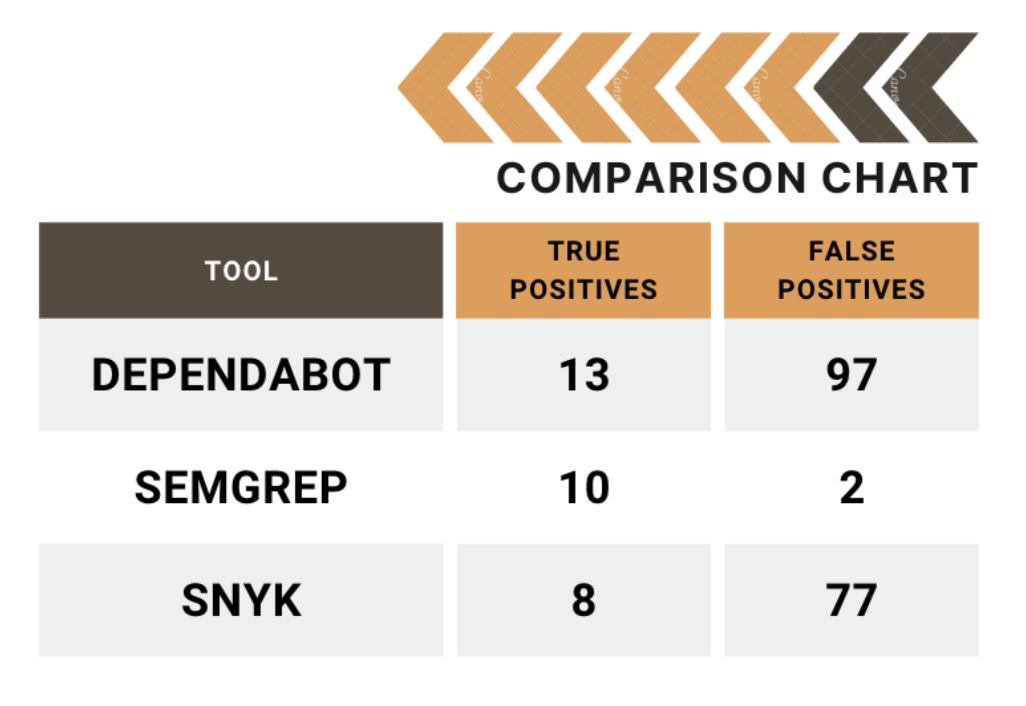A Look at Software Composition Analysis
14 Mar 2024 - Posted by Anthony Trummer

Background
At Doyensec, we specialize in performing white and gray box application security audits. So, in addition to dynamically testing applications, we typically audit our clients’ source code as well. This process is often software-assisted, with open source and off-the-shelf tools. Modern comprehensive versions of these tools offer the capabilities to detect the inclusion of vulnerable third-party libraries, commonly referred to as software composition analysis (SCA).

Three well-known tools in the SCA space are Snyk, Semgrep and Dependabot. The first two are stand-alone applications, with cloud components to them and the last is integrated into the GitHub(.com) environment directly. Since Security Automation is one of our core competencies, Doyensec has extensive experience with these tools, from writing custom detection rules for Semgrep, to assisting clients with selecting and deploying these types of tools in their SDLC processes. We have also previously published research into some of these, with regards to their Static Analysis Security Testing (SAST) capabilities. You can find those results here. After discussing this research directly with Semgrep, we were asked to perform an unbiased head-to-head comparison of the SCA functionality of these tools as well.
It’s time to ignore most of dependency alerts.
You will find the results of this latest analysis here on our research page. Included in that whitepaper, we describe the process taken to develop the testing corpus and our methodology. In short, the aim was to determine which tool could provide the most actionable and efficient results (i.e., high true positive rates), regardless of the false negative rates. This scenario was thought to be the optimal real-world scenario for most security teams, because most can’t afford to routinely spend hours or days chasing false positives. The person-hours required to triage low fidelity tools in the hopes of an occasional true positive are simply too costly for all but the largest teams in the most secure environments. Additionally, any attempts at implementing deployment blocking as a result of CI/CD testing are unlikely to tolerate more than a minimal amount of false positives.

More to Come
We hope you find the whitepaper comparing the tools informative and useful. Please follow our blog for more posts on current trends and topics in the world of application security. If you would like assistance with your application security projects, including security automation services, feel free to contact us at info@doyensec.com.

